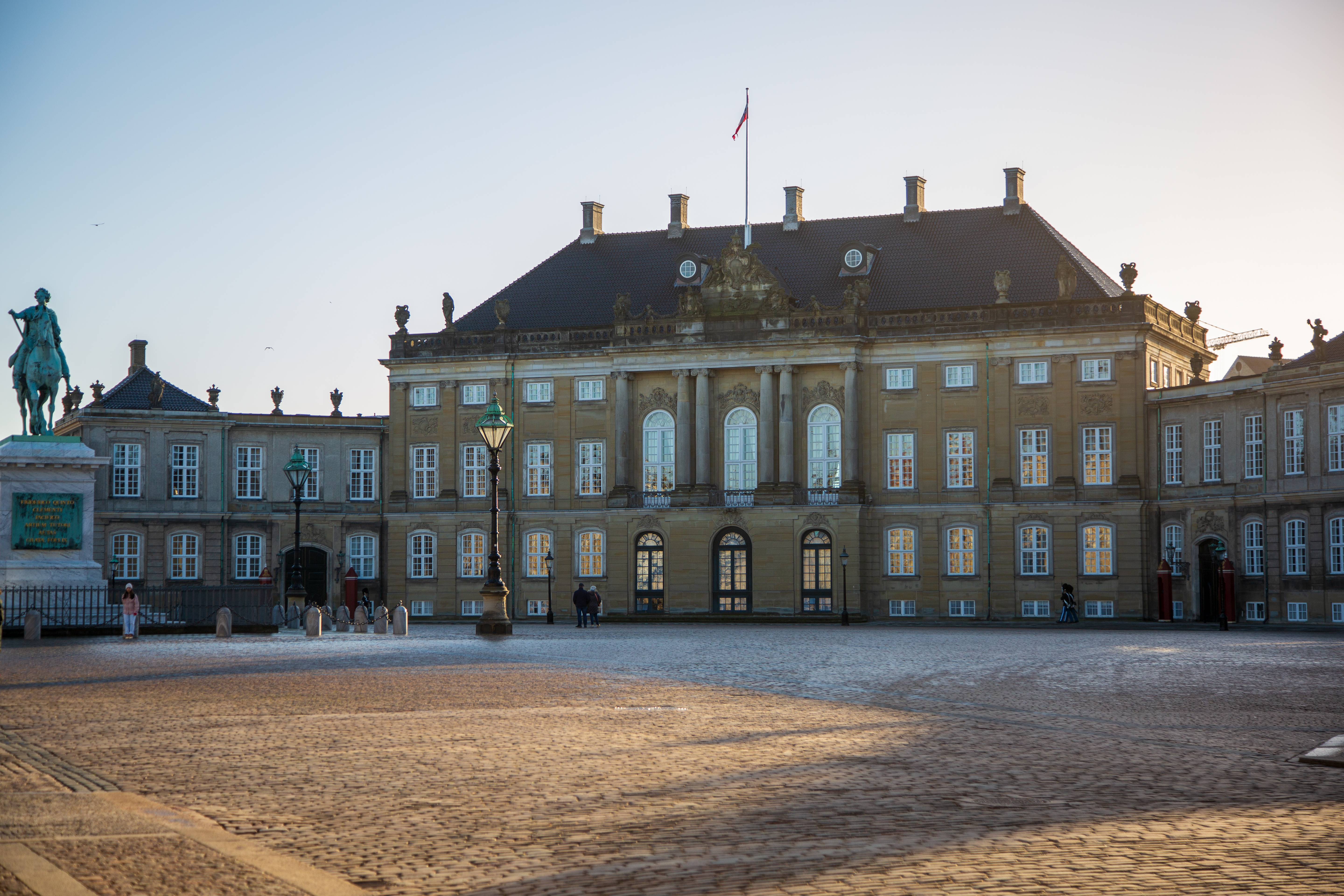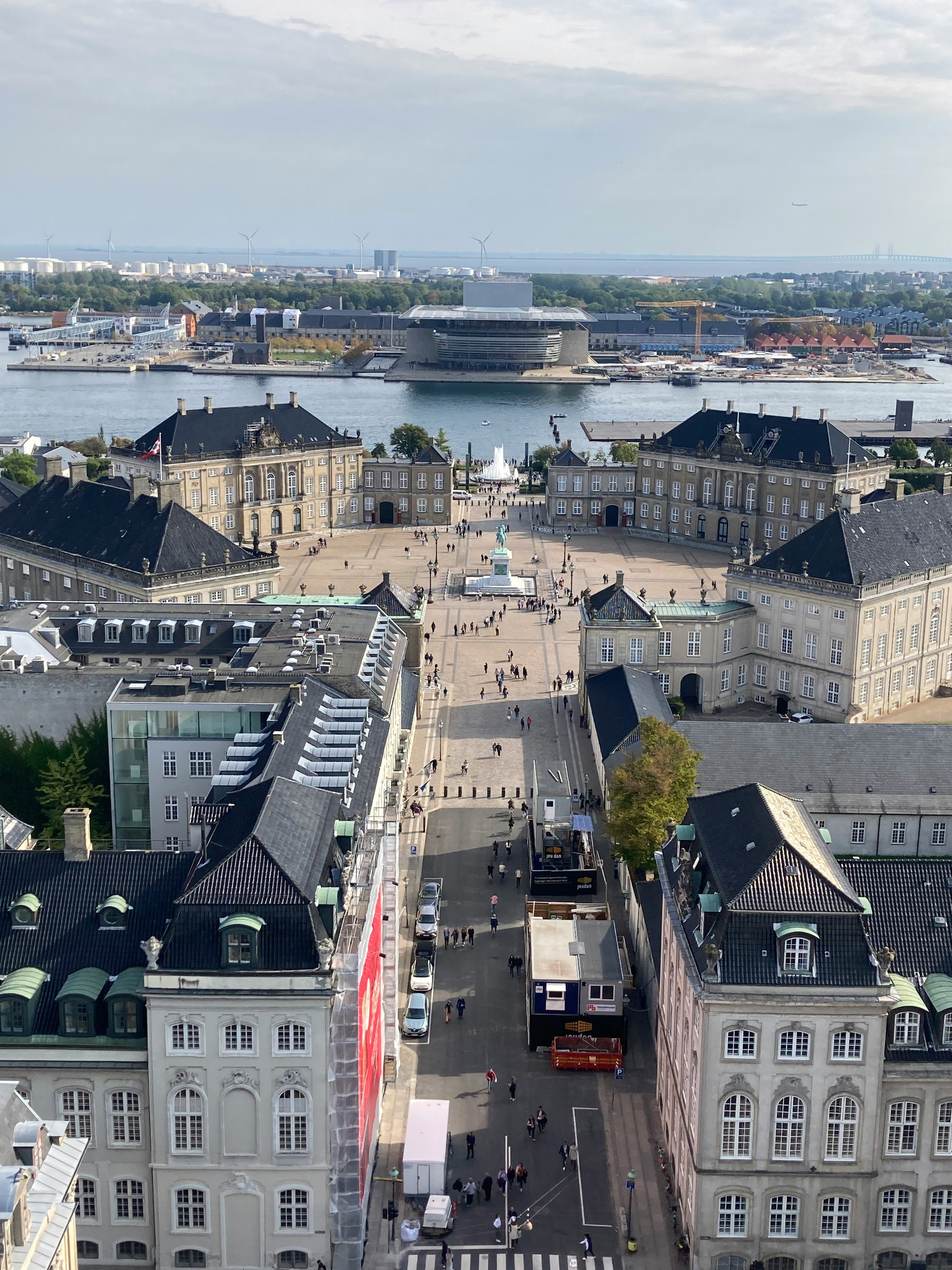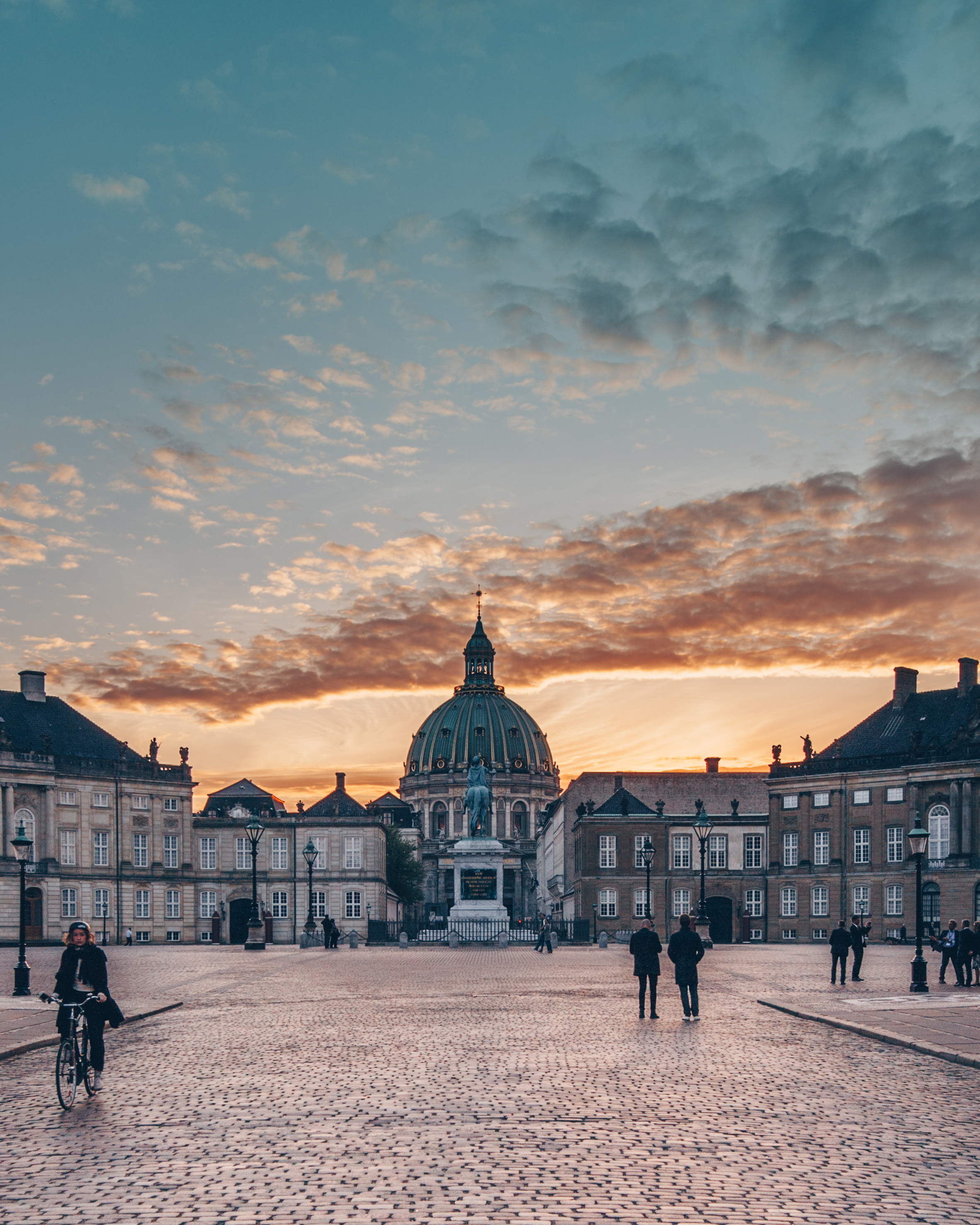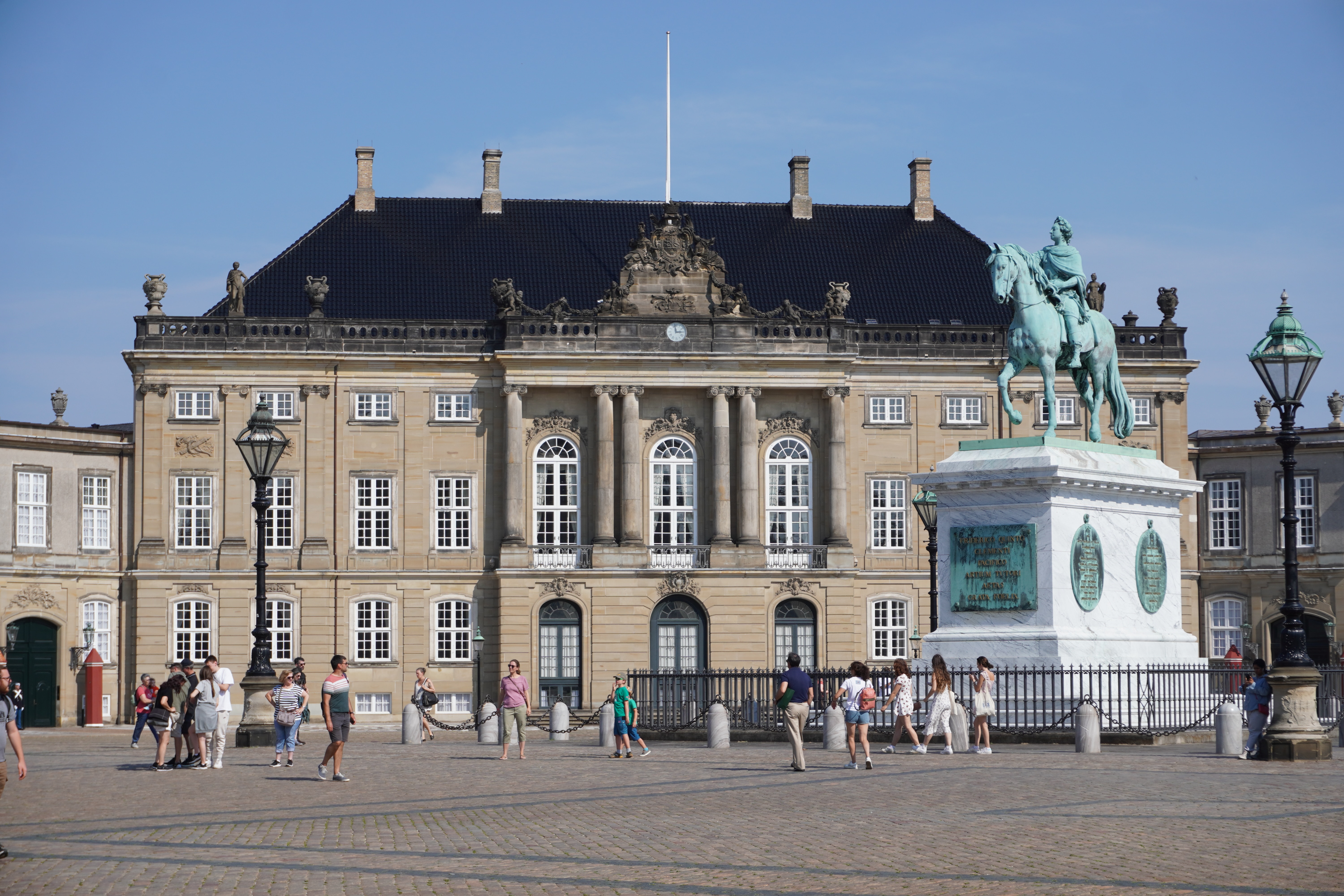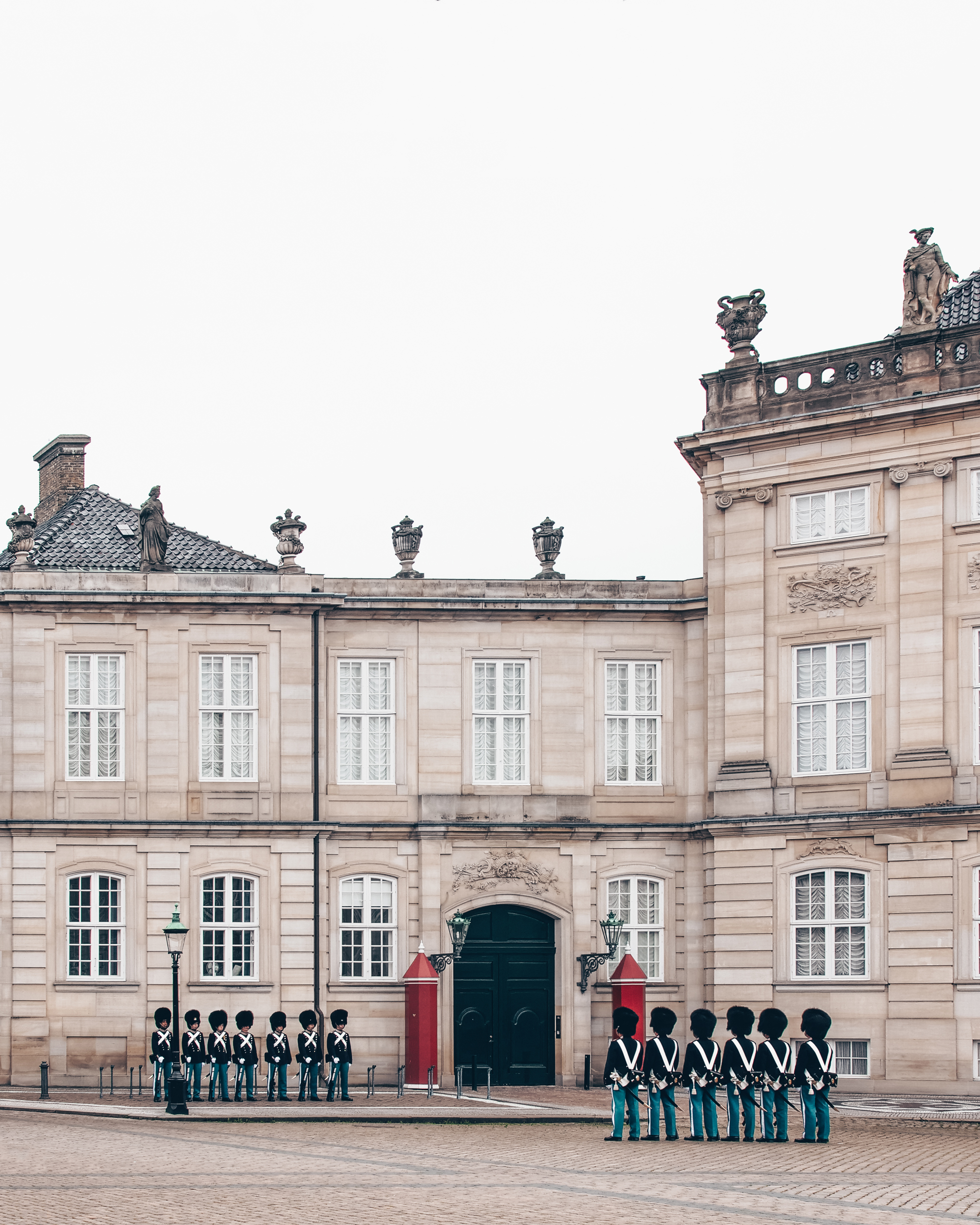Amalienborg is the architectural and symbolic center of the Frederiksstaden neighborhood. The quarter was established to celebrate the 300th anniversary of the Oldenburg royal house in 1748. The purpose of the development was to honor the absolute monarch, Frederick V, while at the same time fulfilling the nobility's need for palaces in the capital. For the same reason, the palace complex was originally city palaces for noble families, and only when Christiansborg burned in 1794 did Amalienborg become the residence of the royal family.
Four Palaces and a Palace Square
The architect Nicolai Eigtved was responsible for the planning and architectural design of both the new neighborhood and the palaces. The centerpiece of Eigtved's plan is the octagonal palace square, surrounded by Schack's Palace (Christian IX's Palace), Moltke's Palace (Christian VII's Palace), Levetzau's Palace (Christian VIII's Palace), and Brockdorff's Palace (Frederik VIII's Palace). All the palaces are named after their developers. In the middle of the palace square, where Amaliegade and Frederiksgade intersect, stands the French sculptor J.F.J. Saly's equestrian statue of Frederick V - the founder of Amalienborg and Frederiksstaden.
Equestrian Statue Facing the Church
The inspiration for Amalienborg Palace Square came from the royal places of honor known from France. The four nearly identical palaces round off and close the corners of the square, and at the same time, the four street exits give a sense of the square as part of a larger context. In other words, the square's balanced order and harmony express the very state ideal of absolutism. The equestrian statue of Frederick V, riding towards the Marble Church, also signals the fundamental absolutist idea: The king is God's living image on earth.
When the royal family acquired Amalienborg in 1794, a colonnade designed by C.F. Harsdorff was erected across Amaliegade as a connecting passage between Moltke's and Schack's palaces. Amalienborg is one of Europe's finest Rococo complexes and gets its name from the pleasure palace Sophie Amalienborg, which previously stood on the site.
Near Amalienborg
The Frederiksstaden, where Amalienborg is located, is filled with pompous buildings. Here you can experience the magnificent Frederik's Church – best known as the Marble Church. The church is one end of the axis that runs via Amalienborg Palace Square, through the small park of Amaliehaven, and ends at the Opera on the opposite side of Copenhagen Harbor. But the architecture also has more modern expressions nearby. Among other things, Skuespilhuset – The Royal Playhouse is located here, inviting everyone to enjoy the harbor's possibilities. At Toldbodgade 13, you will find a slightly less grandiose house that elegantly manages to both stand out and fit in among the old neighboring buildings in the street.
